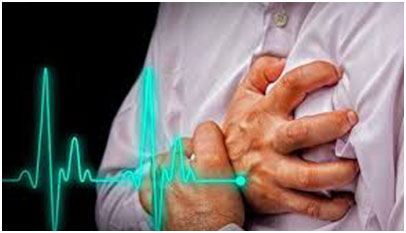What is Sudden Cardiac Arrest?
- SCA is a sudden, abrupt loss of heart function primarily caused by the rapid and/or chaotic electrical activity of the heart known as ventricular tachycardia (VT) or ventricular fibrillation (VF).
- SCA renders a person clinically dead within minutes, unless treated immediately with defibrillation or with bystander CPR followed by defibrillation.
- Sudden cardiac arrest is NOT a heart attack (myocardial infarction), which is caused by a blocked vessel leading to loss of blood supply to a portion of the heart muscle. SCA occurs because of abnormalities in the heart’s electrical conduction system. However, SCA often occurs secondary to a heart attack.
- During SCA, the heart fails to pump blood to the vital organs.
- SCA signs include unconsciousness and no breathing.
- For every minute that elapses after SCA, the chances of survival diminish 10 percent
SCA is among the leading killers of Americans.
- SCA strikes an estimated 326,000 people in the US each year, according to the American Heart Association’s 2015 Heart and Stroke Statistics update.1
- About nine out of 10 Americans who have suffered a SCA have died – a 92 percent death rate on the national level that has not significantly improved over several decades.
- In children and adolescents, the causes of SCA are varied and include heart conditions that result from abnormal heart structure or function, primarily electrical abnormalities, and outside factors such as a sudden blow to the chest or drug use.
- Your chances of survival fluctuate by as much as 500 percent, depending on where you live in the country. (JAMA,2008;300:1423)
- No single national data collection standard (currently exists) is widely used to capture incidence and outcomes.
- Communities with higher bystander CPR participation have higher SCA survival rates.
- 80% of SCA events occur in the home.
- Everyone should know how to call 911, start chest compressions, and find and use an AED.
References
1. Mozaffarian D, Benjamin EJ, Go AS, Arnett DK, Blaha MJ, Cushman M,de Ferranti S, Després JP, Fullerton HJ, Howard VJ, Huffman MD, Judd SE, Kissela BM, Lackland DT, Lichtman JH, Lisabeth LD, Liu S, Mackey RH, Matchar DB, McGuire DK, Mohler ER 3rd, Moy CS, Muntner P, Mussolino ME, Nasir K, Neumar RW, Nichol G, Palaniappan L, Pandey DK, Reeves MJ, Rodriguez CJ, Sorlie PD, Stein J, Towfighi A, Turan TN, Virani SS, Willey JZ, Woo D, Yeh RW, Turner MB; on behalf of the American Heart Association Statistics Committee and Stroke Statistics Subcommittee. Heart disease and stroke statistics–2015 update: a report from the American Heart Association. Circulation. 2015;131:e29–e322.doi: 10.1161/CIR.0000000000000152.


